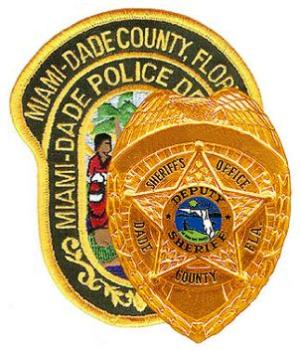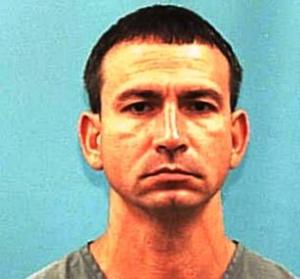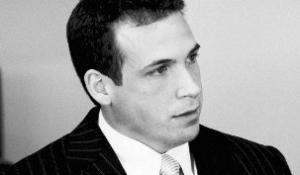special to the Chronicle by Clarence Walker, [email protected]
Part II of his series on ATF Fake Drug Stings Across America.

Today, Miami is no longer in the spotlight, but the drug business is still booming. And now there's a new twist: Law enforcement has made the dangerous world of the illicit drug trade even more dangerous by creating schemes to deceive would-be players into robbing drug trafficking stash houses that don't exist, setting up confrontations between robbers and police or robbers and homeowners over crimes cooked up by law enforcement itself.
The "fake robbery sting" is the brainchild of the Bureau of Alcohol, Tobacco & Firearms (ATF), and the pro-active tactic has proven wildly popular, with state and local law enforcement agencies across the country engaging in the stings, particularly in the inner cities. In Miami, the results have included the mass killings of suspects by police SWAT teams under highly questionable circumstances.
A 2011 "fake robbery sting" that left four people dead -- including a police informant -- gunned down by a Miami-Dade SWAT team, has brought the program into harsh relief. Tricked by an informant into believing the residence was loaded with marijuana and large amounts of cash, the four men showed up armed and wearing ski masks.
SWAT officers shot and killed all four of them, including informant Rosendo Betancourt-Garcia, 39, an ex-con who helped police set up the sting. Also killed by police were Roger Gonzalez-Valdez Sr., age 52, Jorge Lemus, 39, and Antonio Andrew, 36.
A fifth suspect Gonzalez-Valdez Jr., the son of Roger Gonzalez-Valdez Sr., was the only survivor. Police arrested him at the scene in the getaway vehicle, an Cadillac Escalade located outside the targeted residence. Gonzalez- Valdez Jr. later pled guilty to a litany of brutal home invasion robberies and got 27 years in federal prison.

Prosecutors decided not to prosecute any of the police involved, making it clear as they did that they were frustrated by their inability to bring charges and that they believed serious police misconduct was involved. Especially damning to police was the State Attorney's Office (SAO) memorandum on the resolution of the case. The SAO report found one killing justified, but barely minced words about the rest of the lethal operation and police cooperation with investigators:
"Due to a number of unusual, counter-intuitive, suspicious and/or disturbing factors present in the other three shootings, we cannot state definitively that those shootings were legally justified. Nevertheless, because we do not have evidence beyond a reasonable doubt to disprove the version of events given by the three officers and are thus compelled to accept their testimony as truthful [bolding and italics in original],… there is insufficient evidence to prove an unlawful killing of Rosendo Betancourt-Garcia, Antonio Andrew, or Roger Gonzalez-Valdez Sr. by any of the other 10 officers involved in the events of June 30, 2011."
That claim of legal compulsion drew a scoffing rebuke from Jeanne Baker, an attorney for the ACLU of Florida. "There's no rule of law that says that the prosecutors when evaluating a case are compelled to accept as truthful the testimony of the subject of the investigation," she told Miami NBC 6 News.
The SAO report further accused the officers of lying to investigators, moving dead bodies, and possibly planting evidence. The shootings were so disturbing that the State Attorneys went so far as to say "the officers weren't necessarily innocent."
The prosecutors' outrage was palpable, but what really lit up the city was the release by NBC 6 News of a video tape from a police helicopter's infrared camera that showed a replay of the men shot multiple times, although it appeared the men had not fired a shot at the officers and actually had surrendered.
Confronted with the now public video evidence, Miami police officials went on the offensive, expressing resentment that NBC Channel 6 got access to the secret police helicopter surveillance video. Miami-Dade Police Director J.D. Patterson asked the State Attorney's Office to investigate how the video tape showing the shootings fell into the hands of reporters.
A police spokesman said the informant, Rosendo Betancourt, defied officers' orders not to go onto the property, and that the officers, hidden in the dark, said it appeared the would-be robbers were trying to reach for weapons.
But consider the case of Gonzalez-Valdez Sr. The one weapon -- fully loaded -- that was allegedly his was located a few yards from where his body was found. Police had shot him 40 times as cowered against a tree in the fetal position. Police did not explain how Gonzalez-Valdez was threatening them with a weapon yards away from him.
Police officials also complained about the release of information in a State Attorney's Office report revealing that Betancourt, had been wearing a well-disguised audio wrist watch to record conversations. Betancourt could be seen wearing the watch during a surveillance video recorded earlier on June 30, 2011, the day of the killings.
Betancourt had been given code words to signal to police that he was their informant, and the audio surveillance from his watch would have showed whether or not he did so. But the audio wrist watch somehow went missing.
"That would've been a critical piece of evidence," said Jose Arrojo, a Chief Assistant at the State's Attorney Office.
Although police managed to thwart any attempt to prosecute them, the taxpayers of Miami-Dade have not been so fortunate. In July, the city agreed to pay $600,000 to the families of three of the men to settle a deadly force lawsuit. Betancourt's family didn't settle, and their lawsuit against the city remains pending.
The Redland sting -- named after the neighborhood where it went down -- remains one of the bloodiest episodes in a city that has seen its share of questionable police killings. And it raises serious questions about police misconduct and impunity.
"Are there questions marks? Of course. There are too many questions marks," State Attorney Katherine Fernandez-Rundle admitted in an interview with Miami's NBC Channel 6.
Fernandez-Rundle said it was reasonable to conclude that based on the evidence that the officers acted with negligence and may have violated proper police procedures by shooting the men, particularly when an analysis of audio recording of the shooting proved "definitely" that six of the officers did not hear a gunshot from one of the dead men, nor did anyone find a rifle belonging to any of the men, as reported by an officer who said Jorge Lemus had a rifle.
Fernandez-Rundle also cited as another factor in her decision not to file charges a Florida appeals court decision that, she said, held "that any violation of police procedures and training is not admissible as evidence in criminal cases."
"The cops violated his civil rights," Jesse Dean-Kluger, an attorney involved in the lawsuit filed on behalf of Antonio Andrew, told the Miami New Times in 2012. Dean-Kluger argued the cops led the men into a scheme to expect an armed confrontation with drug dealers.
Deadly Operation: An Informant Comes Forward
So where did everything began in the first place? While most people snitch to avoid going to prison or for the easy money, police said Betancourt walked into a Miami-Dade robbery detail in June 2011 out of a sense of moral duty. He told a harrowing tale about being "sick and tired" of extreme violence inflicted on victims by a group of brutal home-invasion robbers.
Betancourt said the violence carried out by the men he knew personally included savage beatings, the cutting of one man's scrotum, using a hammer to pound the toes and fingers of the victims, cutting off fingers, and issuing threats to cut off childrens' fingers to force parents to reveal hidden valuables and money.
Police investigators questioned Betancourt as to how he knew so much about the crimes, Betancourt explained the men regularly sold him the stolen goods that were taken during the robberies. He identified Roger Gonzalez Valdez Sr., Jorge Lemus, Antoinio Lewis and Gonzalo-Valdez Jr. -- as the men responsible for the violent robberies Miami-Dade cops were already investigating.
Police developed a scheme to Betancourt as an informant to lure the men into a plot to rob a drug dealer's marijuana stash house in Redland, a suburb of Miami.

The first suspect killed, an armed Jorge Lemus, was shot to death while crouching down behind a vehicle. Informant Rosendo Betancourt died next in a hail of bullets. An overhead police helicopter infrared camera captured Betancourt surrendering to police with his hands up in the air. Next, police ordered Betancourt to lie on the ground, and crawl towards the officers. Betancourt complied.
The SAO report stated Sergeant Manuel Malgor then ordered Betancourt to turn over, and at this point, according to Malgor, this is when the informant got blasted 23 times -- just as it appeared to Malgor that Betancourt reached for his gun. Indeed a weapon was found in Betancourt's waistband but the lawyers representing Betancourt's family suspected the police planted the gun.
They had other questions, too. Why didn't Betancourt utter the code word assigned by police: "I'm heading to Disney World -- or help!" And what happened to the missing audio watch that Betancourt was wearing to record conversations between himself, the police and the robbers, a watch that could be clearly seen that he was wearing during the "real time" surveillance -- only a few hours before he was killed.
Aerial video footage did not actually capture Sgt. Malgor and fellow officers shooting Betancourt, thus, the prosecutors said, they "could not disprove the Sergeant's story," but they seriously questioned why the officer did not handcuff Betancourt as he laid on his stomach.
"The police let him down," a family member lamented.
Antonio Andrew was shot a dozen times while lying on the ground. Again, the officers claimed Andrew reached for a gun, although State prosecutors determined the officers gave contradictory orders.
For example, one officer hollered at Andrew, "Don't move your hands, and let me see your hands underneath your waistband." When Andrew obeyed the second command, an officer said Andrew made a quick movement towards his waist area. And this is when officers fired a dozen shots, killing Andrew instantly.
When a NBC Channel 6 reporter asked Assistant State Attorney Don Horn how someone can make a simultaneous move for his waistband -- when an officer said Andrew's hands were already in his waistband, Horn replied in disgust, "I don't know. It made no sense to me."
Even more disturbing, Horn wasn't able to question the officer (why) he gave obvious conflicting commands or ask the officer any other question because the officers, as mentioned earlier, would only speak to investigators if no prosecutor was present.
Roger Gonzalez-Valdez Sr. either dropped or discarded his gun as he tried to flee the scene. Police eventually found Gonzalez cowering at the base of a tree. The officer seen on the released video behind the tree with Gonzalez's "back" to him said in his statement that Gonzalez made a quick move into his waistband, a move that allegedly forced the officers to open fire, striking Gonzalez 40 times out of 50 shots fired.
But prosecutors question whether the officer had a good view of Gonzalez near the tree, as the officer claimed. "Our repeated reviews of the video caused us to question whether the officer... was even in a position to see what he saw," the attorneys wrote.
State prosecutors also said the evidence showed that officers moved Gonzalez-Valdez's body after they shot him dead. Here's why prosecutors suspected this: a black hand-held police radio was found in Gonzalez's hand.
"We have a system of justice that require apprehension, prosecution, conviction and sentencing," said attorney Justin Leto of Miami, who handled the wrongful death lawsuit for Jorge Lemus and Antoinio Andrew. "I don't see any evidence indicating these people needed to be shot on sight," Leto said.
Justin Leto's brother Matthew is representing the Betancourt family in its pending federal lawsuit.
"The police did not take care of Mr. Betancourt like they promised," said Matthew Leto.
That lawsuit appears to be the end of the story. Four men are dead -- gunned down by police in an operation more reminiscent of an elite military anti-terror raid than of what we traditionally think of as civilian law enforcement -- and there is no legal accountability. Impunity is something we criticize in heavy-handed Latin American or Middle Eastern governments, but perhaps we need to look in the mirror.
Comments
?
Add new comment